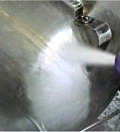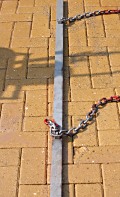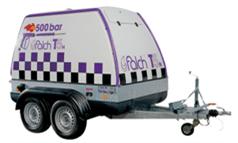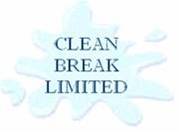 | Tel/Fax 01677 470293 Jason French - Contracts Manager: 07515 327962 Tim Pallister - Technical Advisor: 07831 524733 |
| HOME | BUILDING AND GENERAL CLEANING | DRAIN CLEANING & JETTING | GRAFFITI REMOVAL | WET BLASTING | CHEWING GUM REMOVAL | PRESSURE WASHER SPARES & REPAIRS | CONTACT US | OTHER SERVICES |

Before

After


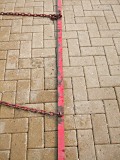
Wet Blasting and Grit Blasting
Wet blasting is very similar to dry sand blasting but instead of using air and media, it introduces an abrasive into the high pressure water and leaves a dust free environment.
This equipment comes into it own when working near public areas or areas of a delicate nature where dust cannot be tolerated. No breathing apparatus is required by the operator and it eliminates any danger to other staff or public near the work area being affected by dangerous cacogenic sand dust.
On most occasions wet blasting is an excellent alternative to open air sand blasting or the very slow vacuum blasting.
When wet blasting we use pressures from 150bar (2175psi) up to 500 bar (7300psi) depending on the type of work that is going to be undertaken. This gives us a massive scope on the type of work that can be done.
With this kit, Clean Break can cover a very wide variety of restoration tasks from cleaning and polishing sandstone to cleaning and polishing stainless steel - without pitting the surface. Paint stripping is a popular use of wet blasting as its flexibility means it is suitable to use on brickwork, concrete and all metals Ė making it ideal for boats, narrow boats, ships, vessels and tanks.
Where UHP ultra high pressure isnít suitable, wet blasting can be utilised in concrete roughening or scabbling tasks as it is able to leave a very even keyed surface.
The abrasives can be anything from a very fine powder, soda to a robust copper slag used for roughening and scabbling concrete.
Unlike other systems, operators have full control of the pressure and amount of media applied to the cleaning surface. This allows delicate cleaning and restoration of stone, masonry, brickwork and concrete including statues, historic builds and monuments

